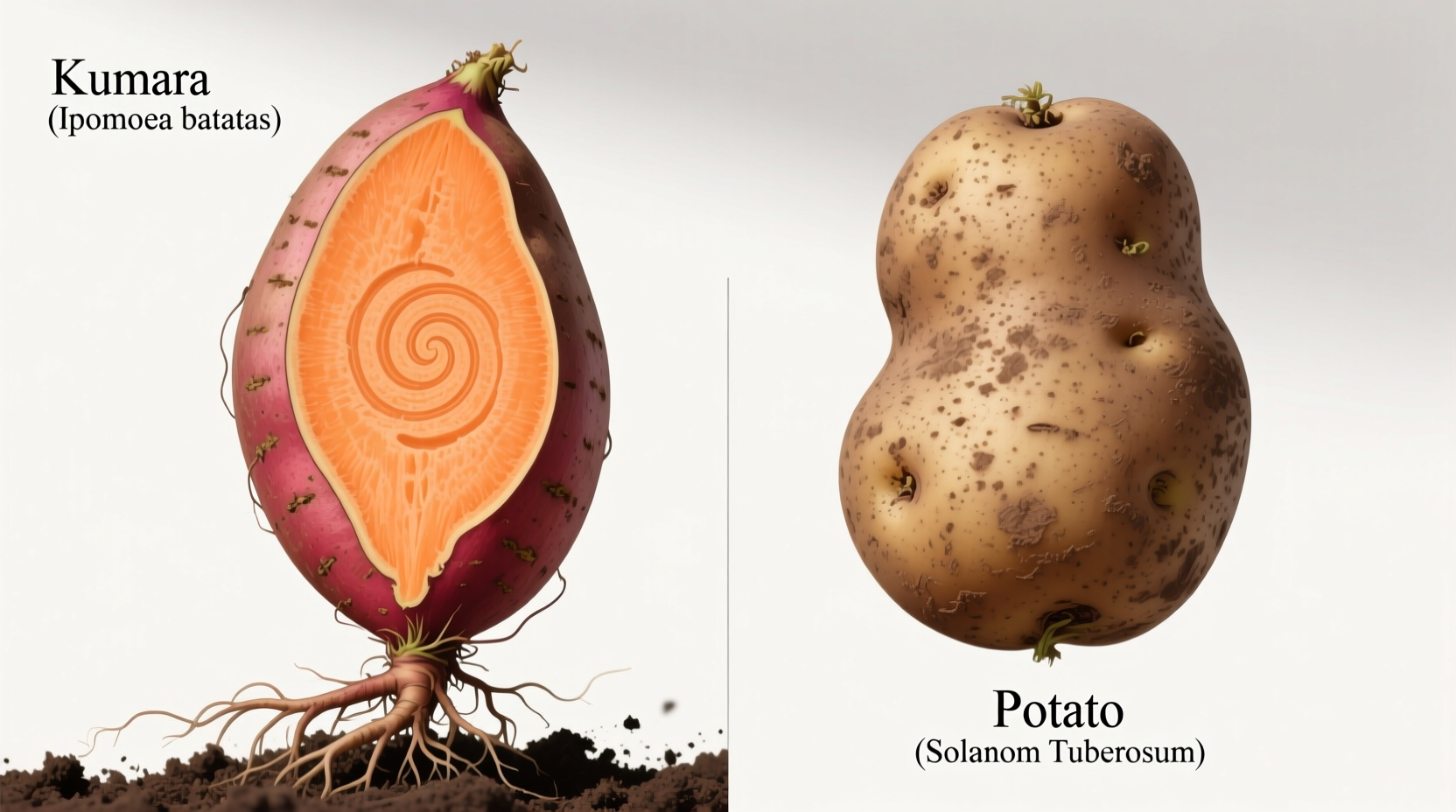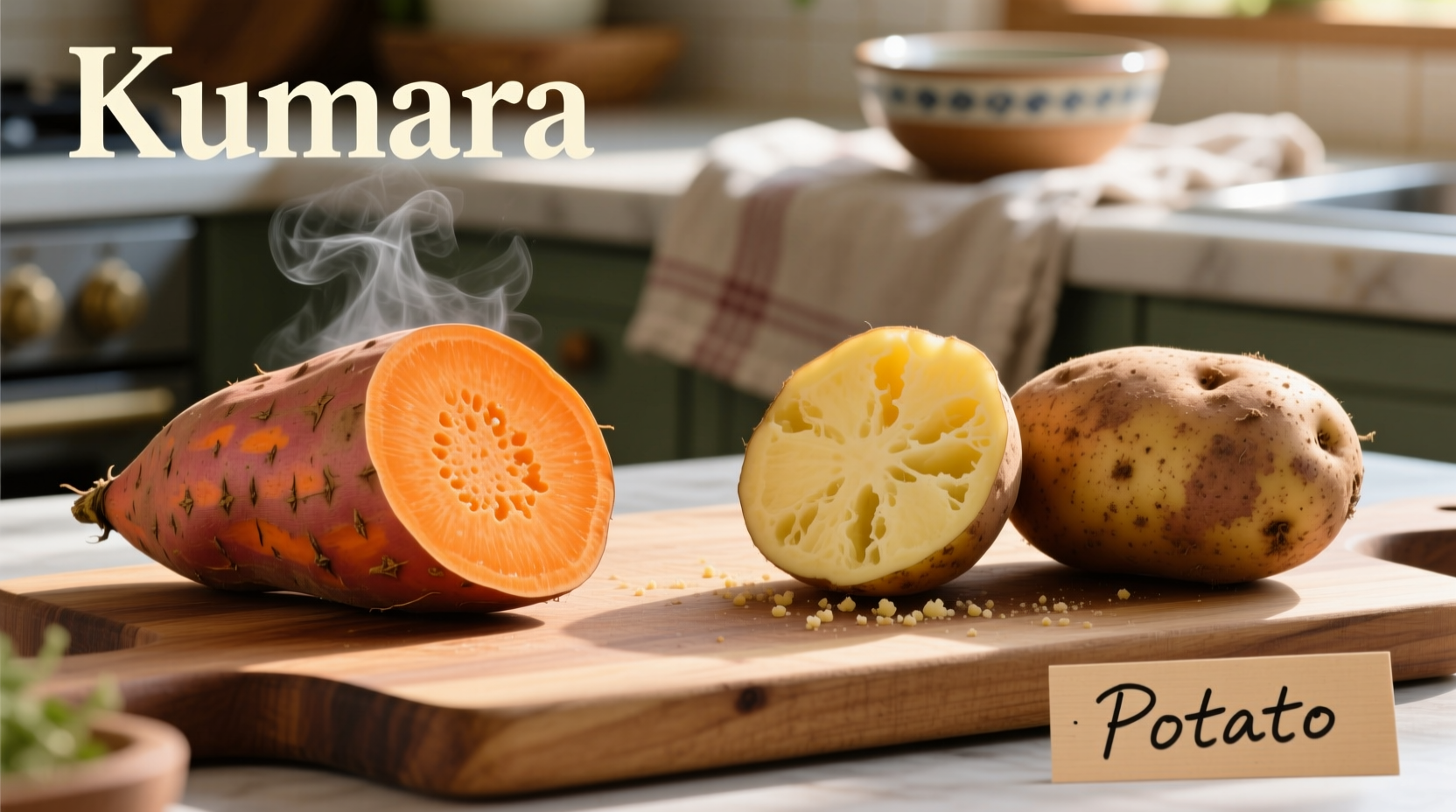When comparing kumara vs potato, the key difference is that kumara (often called sweet potato in many regions) contains significantly more vitamin A and fiber than regular potatoes, while potatoes have a higher glycemic index and more protein. Both are nutrient-dense root vegetables with distinct culinary properties and health benefits.
Understanding the differences between kumara and potatoes goes beyond simple taste preferences—it impacts your nutrition, cooking results, and even blood sugar management. Whether you're meal planning for weight loss, managing diabetes, or simply expanding your culinary repertoire, knowing how these two staple vegetables compare can transform your kitchen decisions.
What Exactly Are Kumara and Potatoes?
Before diving into the comparison, let's clarify terminology. Kumara (pronounced koo-MAH-rah) is the Māori name for what many countries call sweet potato. Despite common confusion, kumara/sweet potatoes (Ipomoea batatas) are botanically unrelated to regular potatoes (Solanum tuberosum), which belong to the nightshade family. This fundamental biological difference explains many of their nutritional and culinary distinctions.
| Characteristic | Kumara (Sweet Potato) | Regular Potato |
|---|---|---|
| Botanical Family | Convolvulaceae (morning glory) | Solanaceae (nightshade) |
| Primary Color Varieties | Orange, purple, white flesh | Yellow, red, purple skin |
| Carbohydrate Type | Complex carbs with more fiber | Simpler starch structure |
| Glycemic Index (boiled) | 44-61 (varies by variety) | 70-85 |
| Vitamin A Content (per 100g) | 14,187 IU (orange variety) | Negligible |
Nutritional Showdown: Health Benefits Compared
When evaluating kumara vs potato nutrition, the USDA FoodData Central database provides definitive insights. A medium orange-fleshed kumara (130g) delivers 400% of your daily vitamin A needs, primarily as beta-carotene—a powerful antioxidant that supports vision and immune function. Regular potatoes, while rich in vitamin C and potassium, contain virtually no vitamin A.
According to research published in the American Journal of Clinical Nutrition, kumara's lower glycemic index makes it a better choice for blood sugar management. The glycemic index of boiled kumara ranges from 44-61 depending on variety, while regular potatoes score between 70-85. This significant difference matters for people with diabetes or insulin resistance.

Culinary Performance: Cooking and Substitution Guide
Understanding how kumara and potatoes behave in cooking prevents kitchen disasters. Kumara contains more natural sugars and less starch than regular potatoes, which affects texture and browning. When roasted, kumara caramelizes beautifully but can become overly soft, while potatoes maintain firmer structure.
Professional chefs note that substituting kumara for potatoes works well in soups and stews, but requires adjustments in baking. As Maya Gonzalez explains from her field research across Latin America: "Traditional Andean recipes using native potatoes won't translate properly with kumara because the starch composition affects how sauces thicken and how dishes set."
Regional Usage Patterns and Historical Context
The historical journey of these vegetables reveals why certain regions favor one over the other. Kumara originated in Central and South America, with archaeological evidence from the Chilca Canyon in Peru dating back 10,000 years. Spanish explorers introduced it to Europe and Asia, where it became a staple crop in Polynesia—hence the Māori name "kumara."
Regular potatoes also originated in South America (Peruvian highlands), but gained global prominence after Spanish conquistadors brought them to Europe in the 16th century. Ireland's historical dependence on potatoes led to the devastating Potato Famine of the 1840s when a blight destroyed crops, highlighting the risks of over-reliance on a single crop variety.
When to Choose Kumara vs Potato
Based on nutritional science and culinary applications, here's when to select each:
- Choose kumara when: Managing blood sugar, boosting vitamin A intake, or seeking antioxidant-rich options
- Choose potatoes when: Needing higher potassium for muscle function, requiring more protein for satiety, or creating dishes requiring starchier texture
- Both work well for: Roasting, mashing (with different flavor profiles), and adding to soups and stews
For athletes needing quick energy replenishment post-workout, potatoes' higher glycemic index can be advantageous. Meanwhile, kumara's sustained energy release makes it ideal for morning meals or pre-endurance activities.
Common Misconceptions Clarified
Many believe yams and kumara are the same—this is incorrect. True yams (Dioscorea species) are tropical tubers rarely found outside Africa and Asia. In the United States, orange-fleshed sweet potatoes are often mislabeled as "yams" due to historical marketing practices.
Another myth suggests kumara are always healthier. While they excel in vitamin A, potatoes contain more potassium and vitamin B6. The healthiest choice depends on your specific nutritional needs and how you prepare them—frying either negates many benefits.
Practical Substitution Guidelines
When substituting kumara for potatoes in recipes:
- Reduce liquid by 15-20% as kumara contains more moisture
- Expect sweeter flavor that may require balancing with acid (lemon juice or vinegar)
- Adjust cooking time as kumara typically cooks faster
- For baking, use a 1:1 ratio but anticipate softer texture
Remember that purple-fleshed kumara varieties behave differently than orange ones—higher in antioxidants but less sweet, making them better potato substitutes in savory applications.











 浙公网安备
33010002000092号
浙公网安备
33010002000092号 浙B2-20120091-4
浙B2-20120091-4